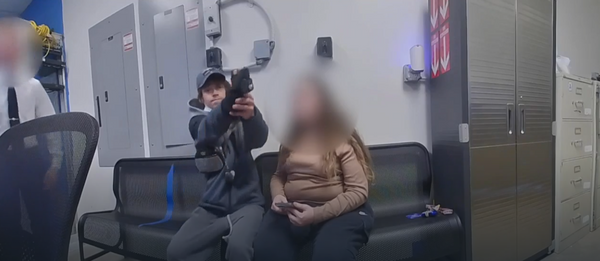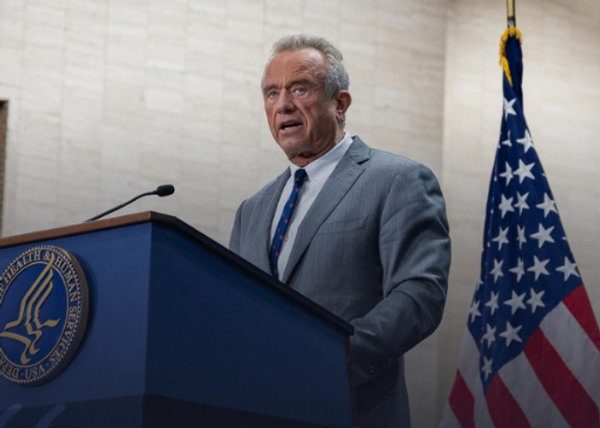It’s that time of year again when you grab a tub of popcorn and settle in for a cozy evening with a familiar slasher film — a haunted house, a masked villain and the perfect jump scare that you probably already know is coming but still eagerly anticipate.
While Halloween is a celebration of all things spooky, horror films in particular have seen a significant commercial boom in recent years. Critics dubbed 2023 “the year horror went highbrow” as films like Talk to Me, Beau Is Afraid and Pearl blurred the line between arthouse cinema and mainstream fright in 2022-23.
In 2025, horror remains the highest-grossing genre, earning more than US$54 million at the box office, with Sinners, Final Destination: Bloodlines and 28 Years Later topping the charts.
Associated in the past with pulpy, low-brow or unserious undertones, horror is increasingly being recognized in academic research as a genre that challenges normative beliefs, disturbs the status quo and exposes collective anxieties.
Horror has always drawn on folklore — South Asian stories of churels (witches), African figures like the Sasabonsam and Indigenous stories of the Wendigo. But Halloween, when horror is most visible in the West, often overlooks the global roots of the genre.
This year, let’s look beyond the western canon and consider the global traditions that terrify us and inspire Hollywood.
As we indulge in our annual horror binge, it’s worth asking: whose fears are we watching on screen and whose stories have we overlooked?
The real nightmare behind Freddy Krueger
What if our dreams were real and the monsters we saw in our sleep could haunt our waking lives?
This idea forms the underlying basis for the enduring popularity of the classic slasher series A Nightmare on Elm Street (1984 original). Freddy Krueger embodies the fear of a nightmare that comes alive. However, few know that Wes Craven was inspired by the dab tsog, a malevolent night spirit identified by the Hmong Laotian community.
In the late 1980s, more than 100 men from the Hmong Laotian immigrant community in the United States died in their sleep without clear explanation, as though they had been scared to death. They were diagnosed as victims of Sudden Unexpected Nocturnal Death Syndrome (SUNDS), a mysterious ailment.
The Hmong believed that the dab tsog attacked vulnerable people, producing sensations of breathlessness and chest-crushing pressure.
Hearing about SUNDS and knowing that there was no conclusive scientific evidence about the cause of deaths inspired Craven’s construction of Freddy Krueger. Some Hmong believed that alienation in their new homes and a lack of connection to ancestral spirits caused the dab tsog attacks.
Craven, fascinated by news articles on the subject, was inspired to capture the fear of going to sleep through Krueger’s sleep paralysis attacks.
Greed and the Wendigo warning
Often in horror, the monster outside is a reflection of the one within.
This idea drives Antlers, in which the Wendigo — a legendary spirit from Indigenous North American folklore — manifests as a terrifying creature that preys on human greed and violence.
In Algonquian traditions, the Wendigo is more than a flesh-eating monster: it is a moral warning against unchecked consumption, selfishness and the violation of natural and social order.
The Wendigo legend challenges isolation and greed, emphasizing the importance of community and sustainability.
Director Scott Cooper and writer Nick Antosca drew inspiration from this legend to create a horror story grounded in real-world anxieties such as trauma, poverty and the consequences of human exploitation of the environment.
By translating the Wendigo myth into a cinematic monster, Antlers draws on its ethical warnings as a commentary on the drug crisis in North America.
When the past refuses to rest
What if the ghosts that follow us across borders aren’t just supernatural but memories of generational trauma that we cannot escape?
His House, a horror film set in the aftermath of the South Sudanese civil war, draws on Dinka folklore to explore the haunting of refugee trauma.
The story traces the heartbreak and isolation of Rial and Bol, a couple who grapple with the British immigration system and the dissonance of adjusting to a new country completely alien to their own. Rial tells Bol the story of the apeth, a night witch who torments the Dinka people, which they later encounter in their new home.
In Dinka belief, the apeth is a malevolent force that feeds on guilt and disrupts domestic harmony — a spirit that “eats” the good fortune of its victims. Director Remi Weekes adapted this myth to mirror the couple’s struggle with guilt for escaping and their displacement in a cold and xenophobic British system.
Haunted by migration and heritage
Is migration always haunted by ghosts from another place?
Tracing the complexities of assimilation in the diaspora identity, It Lives Inside follows Samidha, or Sam, an Indian-American teenager struggling to fit into white suburbia while distancing herself from her heritage.
When her estranged friend Tamira warns her of a demonic presence sealed inside a glass jar, Sam dismisses her until the entity, known in Hindu folklore as a Pishacha is unleashed. In Indian mythology, the Pishacha is a flesh-eating demon that feeds on negative emotions and possesses those overcome by shame, anger or grief, devouring the soul from within.
Director Bishal Dutta reimagines this spirit as a metaphor for the cultural and psychological tension of growing up between worlds. The monster that haunts Sam is as much her suppressed East Indian identity as it is a supernatural being — a corporeal embodiment of internalized fear and generational conflict.
Through the language of horror, It Lives Inside transforms the diaspora experience into a chilling allegory of belonging and denial.
What scares us connects us
As horror becomes a genre to reckon with, increasingly immersing us in social critique rather than mere spectacle, it also reminds us that fear is a universal emotion and that the stories we tell about it are profoundly cultural.
From the Hmong’s dab tsog to the Dinka’s apeth, from the Wendigo to the Pishacha, horror offers us ways to rethink the crises of our time — greed, trauma, grief and displacement — through ominous figures familiar to specific communities.
A truly global Halloween looks beyond the usual monsters and toward the myths that continue to unsettle imaginations across the world.
As horror’s commercial success suggests a growing search for catharsis, cultural complexity and emotional depth, it reveals that the genre’s real power lies not only in its ability to frighten us but in how it connects us across borders through our shared fascination with what we fear.
Amala Poli does not work for, consult, own shares in or receive funding from any company or organisation that would benefit from this article, and has disclosed no relevant affiliations beyond their academic appointment.
This article was originally published on The Conversation. Read the original article.







